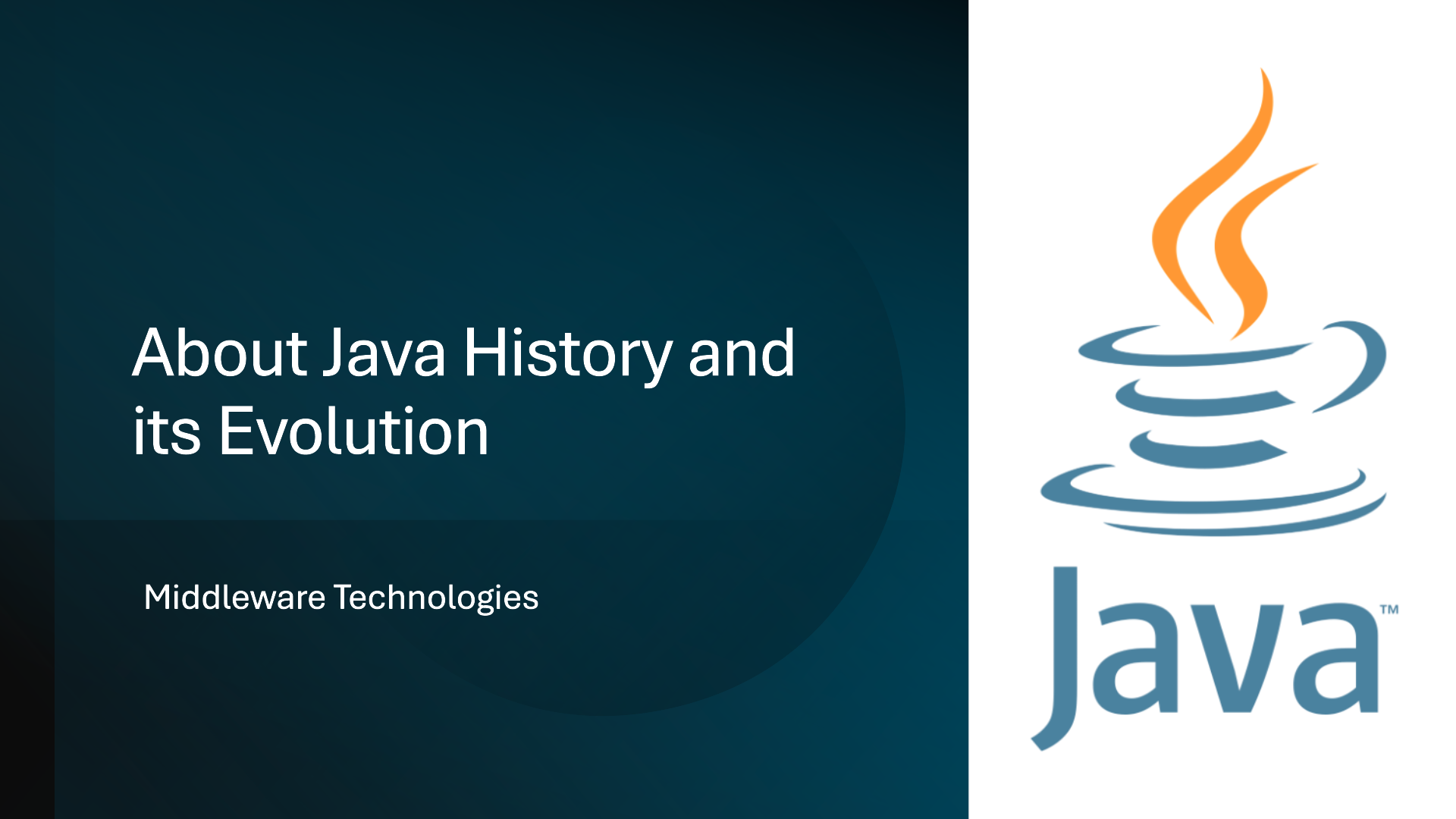About Java History and its Evolution

Introduction
For any programming language that came into existence there are many reason behind it. Similary Java programming language creation and its evolution was no exception.
There are two fundamental reasons behind any computer programming language innovation and development as shown below.
- To adapt to changing environments and uses
- To implement refinements and improvements in the art of programming
Let us try to understand some of the programming languages that came into existence and the forces that led to their innovation.
There were many programming languages that came into existence before C eg. BASIC, PASCAL, COBOL and FORTRAN but all these programming language were designed taking into consideration and addressing only some of the aspects shown below.
- Ease-of-use versus power
- Safety versus efficiency
- Rigidity versus extensibility
C Programming Language
This programming language came into existence as there was a need for a structured, efficient and high level programming lanugage which could replace the assembly language programming for creating system programs. C was the result of a development process that started with an older language called BCPL, developed by Martin Richards. BCPL influenced a language called B, invented by Ken Thompson, which led to the development of C in the 1970s.
C is considered as a powerful, efficient, structured language that was relatively easy to learn.
C++ Programming Language
As the complexity of the programs written in C started to increase there was a need for another programming language that could address this issue. By the early 1980s, many projects were pushing the structured approach past its limits. To solve this problem, a new way to program was invented, called object-oriented programming (OOP). C++ was the first programming language that addressed this complexity issue through the incorportation of Object Oriented Programming. OOP is a programming methodology that helps organize complex programs through the use of inheritance, encapsulation, and polymorphism.
C++ is built on the foundation of C, it includes all of C’s features, attributes, and benefits.
Java Programming Language
The main forces behind the innovation and evolution of Java Programming Language are Internet and World Wide Web. Java programming language evolution started initially to address the portability issue. They wanted to build a programming language that could run on any hardware with any operating system. But due to ongoing revolution with the Internet and WWW the focus shifted from innovation a protable language for end users or consumer electronic devices it shifted to providing a portable and secure programming language for the running the distributed networking applications which can be used in the Internet and WWW ecosystem.
The key that allowed Java to solve both the security and the portability problems just described is that the output of a Java compiler is not executable code. Rather, it is bytecode. Bytecode is a highly optimized set of instructions designed to be executed by what is called the Java Virtual Machine (JVM), which is part of the Java Runtime Environment (JRE).
Java’s current release cycle is there will be a feature release happening every 6 months to provide developer community with new enhanced and innovative features for use. Also there will be a LTS release every 3 years. An LTS release will be supported (and thus remain viable) for a period of time longer than six months.
JDK 21 is the latest Long-Term Support (LTS) release of the Java SE Platform as Nov, 2024.
Now that we have a basic understanding of what were the driving forces that led to development of Java programming language. Let us also try to understand about the features that Java as programming language provides to us.
Java Buzzwords
Simple
Java inherits the C/C++ syntax and many of the object-oriented features of C++. If you already have a basic understanding of OOP concepts learning java is going to be easier.
Object-Oriented
Java was not designed to be source-code compatible with any other language like C or C++. It inherited some of the concepts but implemented it clean, usable, pragmatic way without much clutter. The object model in Java is simple and easy to extend, while primitive types, such as integers, were kept as high-performance nonobjects.
Robust
Unlike other programming language which allow for memory management by the programmer itself. Java restricts it in this area for a robust program development without any issue. It helps to find and address programming mistakes early in the program development.
Multithreaded
Java supports multithreaded programming, which allows you to write programs that do many things simultaneously. Basically it helps us to build networking applications which required multithreaded support.
Architecture-Neutral
Java’s innovations main driving factor was program to be architectural neutral. As the saying goes their goal was to “write once; run anywhere, any time, forever.”.
Interpreted and High Performance
Java enables the creation of cross-platform programs by compiling into an intermediate representation called Java bytecode. This code can be executed on any system that implements the Java Virtual Machine. Java bytecode can further be converted to native code wherever required using the JIT compile making it high performance platform.
Distributed
Java is designed for the distributed environment of the Internet because it handles TCP/IP protocols. Java also supports Remote Method Invocation (RMI). This feature enables a program to invoke methods across a network.
Dynamic
Java programs carry with them substantial amounts of run-time type information that is used to verify and resolve accesses to objects at run time. This makes it possible to dynamically link code in a safe and expedient manner.
Hope you enjoyed reading this article. Thank you..
Leave a Reply
You must be logged in to post a comment.